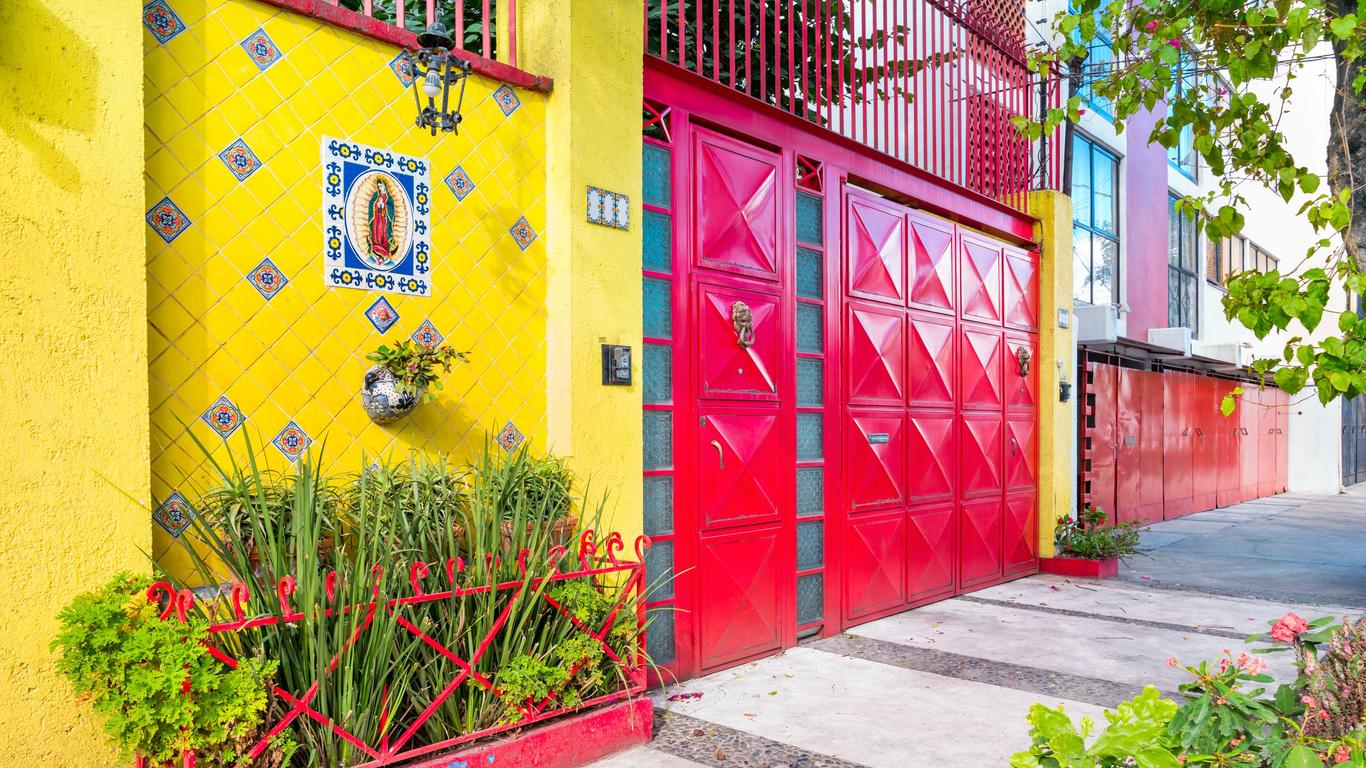Located around ten kilometres to the south of Mexico City’s Zocalo plaza, Coyoacan is one of the Federal District’s 16 boroughs. It centres around the historic heart of Villa Coyoacan, whose narrow cobblestone streets and charismatic plazas were established during the Spanish colonial period.
Plaza del Centenario and Plaza Hidalgo lie at the heart of Coyoacan’s historic area, with the latter named for the priest Miguel Hidalgo y Costilla. Along the northern side is the Casa Municipal, an impressive 18th century government building, with the City Council Hall adjacent exhibiting an impressive mural which depicts Coyoacan in its pre-Hispanic years. Plaza del Centenario lies just to the west, with its fountain featuring a bronze sculpture of two coyotes, the animal for which the borough is named. The Parish of San Juan Bautista lies alongside and is among the borough’s most important historic buildings, dating from the early 16th century when it was built as a Dominican monastery. The Museo Nacional de Culturas Populares is also situated just off the square, with exhibits showcasing local cultural activities such as Lucha Libre wrestling. The surrounding streets are lined with elegant colonial-era mansions, particularly along Calle de Higuera and Calle Francisco Sosa, many of which have been heritage-listed. Just to the west of Plaza del Centenario is the neighbourhood of Santa Catarina, renowned for its bright yellow chapel built for the indigenous population during the early colonial years and still exhibiting 400 years old murals on its interior. La Concepcion, just to the south-east of Villa Coyoacan, is another of the borough’s oldest areas, centred around Plaza de la Conchita and the Purisima Concepcion Chapel, and home to Jardín Frida Kahlo which celebrates this renowned artist.
Coyoacan is connected to surrounding Federal District boroughs along Mexico City’s extensive metro system, as well as by public bus services which traverse the city. The historic centre of Villa Coyoacan is relatively compact and can easily be explored on foot.
The name Coyoacan is believed to come from a Nahuatl word meaning “place of coyotes” and was inhabited by Tepanec people prior to the Spanish conquest. They welcomed Hernan Cortes and the Spanish in favour of the Aztec rule, with the Europeans using the area as a headquarters during their conquest of the Aztec Empire.





